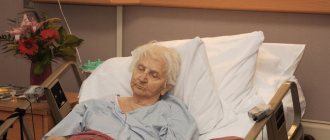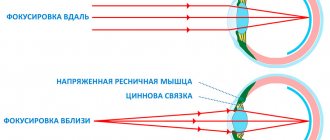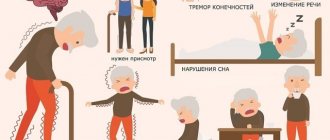Many functions of the human body continue to function after death for several minutes, hours or even weeks. This sounds like science fiction, but it is a documented fact. Nails and hair grow for several days after death, and skin cells also function. It has been proven that the brain continues to function for some time. So how long does the brain live after a person’s death?
Controversies and theories
Numerous studies have been carried out, the results of which were the statement that the human brain continues to function for 4-6 minutes after the death of the body. Many scientists have argued about how a person sees and relates to his own death and still cannot come to a common conclusion.
Some doctors believe that the individual’s mind dies immediately, while others believe that it continues to work indefinitely. Recent testing has shown that after death, the work of the central nervous system does not stop. Therefore, in a state of clinical death, a person can be aware of what happened to him, because consciousness continues to function.
Modern medicine has reached a high level of development. New devices can keep the body in working condition (pumping blood and oxygen) for years. Therefore, a reasonable question arose: how long does the brain live after death, and what can be considered death in general? Its main symptom is the death of neurons, which leads to the loss of the individual’s personality.
Unravel - and overcome!
The human body is home to a huge number of bacteria - scientists count about 10 thousand of their species, and the mass of these microorganisms can reach 3 kg. When our immune system ceases to function with our last breath, these countless hordes of “little friends” are no longer held back. The microflora begins to devour the deceased from the inside. Bacteria move freely throughout the body, engulf the intestines and then the surrounding tissues, and invade the blood capillaries of the digestive system and lymph nodes. They penetrate first into the liver and spleen, and then into the heart and brain.
Simultaneously with the activity of microbes, cadaveric spots are formed - they appear where stopped blood settles in the tissues. After 12-18 hours, the spots reach their maximum coverage, and after a few days they become dirty green. But it turns out that at the same time some parts of the deceased’s body remain quite viable.
Article on the topic
A light in the end of a tunnel. What do people who have experienced clinical death say? For example, even though the heart has stopped long ago, its valves may still be intact. The fact is that they contain connective tissue cells that live a long time. This means that heart valves can be used for transplantation. And this is after one and a half days after death!
The cornea, the most convex transparent part of the eyeball, lives even longer. It turns out that it can be used for medical purposes for 3 days after a person has died. The reason is that the cornea is in direct contact with the air and receives oxygen from it.
All these facts indicate: the human body does not die at one moment, but gradually. And death as a biological phenomenon - despite the fact that we don’t really like to think and talk about it - still conceals many mysteries. Who knows, maybe by solving them we will overcome death itself?
Dying from a scientific point of view
A serious illness or fatal injury leads to exhaustion of the body and the development of a thermal state. As a result, the functioning of all organs and systems is disrupted.
At this stage, timely intervention by doctors with the help of intensive care can help return the body to normal.
If resuscitation does not give a positive result, a preagonal state occurs, the main characteristics of which are:
- decreased blood pressure;
- weak brain response to stimuli;
- slow heart rate;
- weak breathing.
The body uses all its strength to correct the situation. Therefore, in a state of death agony, a person may feel improvement, but this lasts only a moment. The central nervous system cannot cope with its work, so the pressure can be restored and breathing can return to normal.
The body spends its last strength on this, after which clinical death occurs. There is no breathing, the heart does not beat, all metabolic processes in the cells slow down and stop. The body lacks oxygen, the brain suffers the most. After the actual death of the body, the stored nutrients last no more than 6 minutes. This is exactly how long the brain works after cardiac arrest.
If, within 6 minutes after cardiac arrest and lack of breathing, the necessary actions for resuscitation are carried out, which will prevent necrosis of organ cells, then the person can be brought back to life.
If biological death has occurred, that is, the cerebral cortex has died, then this is irreversible. With the help of the device, you can maintain the heartbeat and ventilate the lungs for some time, but this is no longer a sign of life.
What happens to a person in the last days before death?
Signs that a person will die soon can be determined quite easily if you pay attention to a sick or old person. In the last days of life, a dying person feels especially tired, wakefulness and sleep patterns are disrupted, and the cough and swallowing reflex slows down. A person near death reacts weakly to someone addressing him and does not notice touching.
By reducing blood flow to the brain, a natural chemical imbalance occurs, and the person becomes disoriented, often experiencing a feeling of falling. There is also a departure from reality, visions from the past or hallucinations arise.
Approximately 2-4 days before death, a weakened person begins to “see” his loved ones who are not nearby. He can contact them, ask questions, reminisce. According to Mark Bugey, head of the department of palliative medicine in Melbourne, hallucinations and visions that arise are a consolation, take away from reality and terrifying thoughts, and allow you to die peacefully.
Scientists and doctors assure that manifestations such as hallucinations should not be removed with the help of medications. If a person does not feel pain from a chronic disease, you should not use medications; you need to let the person go away naturally and calmly.
Very often, when dying, people have an unstable body temperature, which fluctuates due to circulatory problems. At some point, a person may be completely cold to the touch, at another, hot. Another sign of imminent death is a violation of taste and smell. Food loses smell and taste, causing interest in food to disappear.
How does lack of oxygen affect the brain?
There are two forms of oxygen deficiency:
- Anoxic damage. The brain is completely deprived of oxygen through sudden cardiac arrest, suffocation or any other injury.
- Hypoxic damage. He receives a smaller dose than is needed for full functioning.
The organ will not be harmed by a few seconds without oxygen, so people can dive or live with breathing problems.
How long does the brain live without oxygen? The onset of anoxic damage depends on many factors: the condition of the organ, the level of oxygen in the blood at the time of injury, and the general condition of the body. A minute without oxygen can cause serious injuries, and the condition only gets worse:
- 180 seconds will result in loss of consciousness;
- neurons begin to die after 1 minute without oxygen;
- 3 minutes lead to serious consequences;
- 5 minutes is inevitable death;
- 10 minutes - coma, while the brain can still function, but suffers severe damage;
How many minutes does it take for the brain to completely die? 15 minutes is enough for irreversible consequences.
If you train your body, you can hold your breath for up to 22 minutes, and the brain does not suffer any damage.
What Causes NDE Effects?
Awareness of one's own death
One of the most common experiences is the awareness of one's own death. However, this feeling has also been experienced by living people with Cotard's syndrome (walking corpse syndrome).
A striking example is the case of Attributional style in a case of Cotard delusion. A 24-year-old female patient in a London hospital. She believed that she had died of a cold and was in heaven. After a few days, the mania began to subside and then disappeared completely.
This syndrome is associated with dysfunction of the parietal lobe and prefrontal cortex of the brain. It is observed after head injuries, during the advanced stages of typhus and multiple sclerosis.
Light at the end of the tunnel
This experience is also often mentioned when describing near-death experiences. Living people experience similar sensations. During overload, pilots' blood pressure decreases greatly and hypotensive fainting may occur, which is accompanied by a temporary depression of Direct determination of man's blood pressure on the human centrifuge during positive acceleration. peripheral vision. For 5 to 8 seconds, pilots observe the same dark tunnel that humans experience during an NDE.
There is an assumption that the tunnel arises from Out-of-body experience and arousal. due to impaired blood supply to the retina. This state is characteristic of extreme fear and hypoxia, which, in principle, is close to dying.
Leaving the body
There is an assumption that the angular gyrus is responsible for this experience. In one experiment, Stimulating illusory own-body perceptions. found that stimulation of this area causes a sensation of transformation of the subjects' arms and legs (response of the somatosensory cortex) and movement of the entire body (response of the vestibular system).
Scientists have concluded that out-of-body experiences may occur due to distortion of information from the somatosensory cortex and vestibular system.
Also, out-of-body experiences are characteristic of the state on the border of sleep and wakefulness - hypnagogia and sleep paralysis. The body unbound: vestibular-motor hallucinations and out-of-body experiences. . In this state, a person may hallucinate, be conscious, unable to move, and experience a sensation of floating next to their body.
Happiness and Prosperity
Near-death experiences are typically accompanied by a state of euphoria and calm. The same effect can be obtained from taking certain medications, such as ketamine. This drug binds to mu opioid receptors and causes euphoria, dissociation, spiritual experiences and hallucinations.
Scientists theorize that during NDE, the opioid reward system is activated to dull pain, and the released endorphins create all the positive experiences.
There is also a theory that norepinephrine is to thank for the euphoria. There is nothing paranormal about near-death experiences: how neuroscience can explain seeing bright lights, meeting the dead, or being convinced you are one of them. and the locus coeruleus is the part of the brain responsible for the release of this hormone.
Norepinephrine is involved in a person’s arousal from fear, stress and hypercapnia - an excessive amount of CO2 in the blood, so it may well be released in a near-death state.
The locus coeruleus is associated with brain structures responsible for emotion (amygdala) and memory (hippocampus), fear response and opioid pain relief (periaqueductal gray matter), and dopamine reward system (ventral tegmental area). Scientists believe that the norepinephrine system may be associated with positive emotions, hallucinations and other effects of near-death experiences.
Whole life before your eyes
In the near-death state, people often see a series of events in their own lives. In his book “We are our brain. From the Uterus to Alzheimer's" Dick Swaab argues that people experience past events by activating the medial temporal lobe. This structure is involved in storing episodic autobiographical memories and is very sensitive to oxygen deprivation, so it is easy to activate.
The 2004 Britton Near-Death Experiences and the Temporal Lobe study confirmed that people who have experienced a near-death experience have changes in activity in the temporal lobe.
Meeting with the Dead
Many scientists believe that a person's near-death experience takes place in an intermediate state between sleep and wakefulness, and that the REM sleep phase is responsible for all mystical images and hallucinations.
To test this hypothesis, scientists studied Does the arousal system contribute to near death experience? 55 people who had near-death experiences. It turned out that these people were more susceptible to sleep paralysis and associated visual and auditory hallucinations. Scientists have suggested that when in danger, such people are more likely to enter REM sleep, which is why they have vivid memories of their near-death experiences.
In addition, hallucinations are common in some brain injuries. For example, patients with Alzheimer's disease or advanced Parkinson's disease sometimes report ghosts or monsters, and after brain surgery, some patients see dead relatives.
Why is oxygen so important?
Of the total body weight, gray matter occupies only 2%, but at the same time, for full-fledged work, it consumes 20% of all gas entering the body. Without oxygen, the brain will not be able to do its job.
Glucose is needed to perform any activity, such as the neurons that control all body functions. Without oxygen, cells will not be able to produce this substance and subsequently convert it into the necessary energy.
If you deprive the brain of oxygen, the cause of its death will be the inability to nourish the cells, because there simply will not be energy (glucose) for this.
Preventive measures
Prevention of hypoxia is important both for those who suffer from symptoms and for those who do not experience symptoms of chronic oxygen deficiency. Medical experts recommend:
Advertising:
- spend more time in the fresh air;
- regularly ventilate the room;
- take active breaks between sedentary work;
- devote time to physical activity;
- maintain a sleep schedule;
- regulate nutrition.
It is important to give the body proper rest to prevent the development of hidden ailments. Prevention is important because almost every second person has experienced hypoxia at least once in their life.
Most attribute the symptoms to fatigue, high workload, and overwork.
If you experience dizziness, convulsions, frequent fatigue and drowsiness, it is worth checking your blood condition. An electroencephalogram and MRI are also done. Often, chronic hypoxia goes silently until the last stage of symptoms appears.
What confirms brain death?
The main criteria for death may be the following:
- Lack of response to external stimuli.
- No brainstem reflex:
- emetic;
- pupil reaction to light;
- corneal reactions;
- no breathing.
But such indicators cannot always indicate the occurrence of death. It is mandatory to measure the pupils, which must be fully dilated or of average size. If the pupils are narrow, this may indicate the presence of vital processes.
In general, it is very difficult to determine this condition; any mistake will cost the patient’s life. There are basic criteria for organ death, which were formulated in 1968 at Harvard. All neurologists and resuscitators adhere to them and always use them before turning off the ventilator and declaring death.
First, each patient is diagnosed with a disease, based on which various causes are identified that led to the death of the human brain. Afterwards, all conditions that are externally similar to death, but can be reversible, are necessarily excluded:
- overdose of medications;
- poisoning of the body with toxins;
- dysfunction of the endocrine system.
After this, doctors determine the symptoms of organ stoppage:
- coma;
- no reaction to pain and irritants;
- no reaction of pupils to light;
- absence of reflexes of the pharynx, trachea and eyeball.
Also, a test is carried out for the presence of breathing - the blood is saturated with gases, controlling their quantity, after which the mechanical ventilation is stopped, and the level of carbon dioxide in the arteries is measured. The result is considered positive at 60 mmHg. Art. and lack of breathing. If breathing resumes, the lungs are ventilated again and try to restore the person’s vital functions.
Another stage is monitoring a person for 6 hours with primary brain damage. They check all parameters, the presence of a reaction, and monitor all changes that may appear in the presence of brain activity.
First aid and treatment
Medical specialists conduct an examination to determine the stage and extent of brain damage. Concomitant diseases, pathologies, and complications are taken into account. A complex of drugs is prescribed for treatment.
| Type of drug | Efficiency | Titles |
| Analgesics | Potent substances to eliminate pain. Reduces the sensitivity of acute manifestations. | Bupranal Pentalgin Acamol |
| Antidotes | Reduce the manifestations of hypoxia resulting from poisoning or intoxication. | Cuprenil Unithiol Atropine |
| Antispasmodics | Relieves spasms in both the bronchi and muscles. Reduce the risk of stroke. | Bendazol Spazmalgin Trigan-D |
| Dilatating bronchi | Increases oxygen supply. Complications that require artificial ventilation are excluded. | Salbumatol Atrovent Berodual |
Vitamin complexes enriched with B6, C, K1 are often prescribed. Adjust the diet and add healthy foods. At the initial stage, only lifestyle adjustments are possible.
First aid for a lack of oxygen boils down to calming the patient, giving him access to clean air, and increasing the ventilation of the room. It is not recommended to take medications on your own, as there is a risk of worsening the situation and increasing the likelihood of complications.
Advertising:
How long does the brain survive after cardiac arrest?
Conducted studies have shown that the activity of the central nervous system in the absence of a heartbeat lasts differently for each individual person. Therefore, it is impossible to say exactly how long the brain lives after cardiac arrest. When the oxygen supply instantly stops, it is impossible to calculate the duration of clinical death, which leads to its death.
The neurons that suffer the most are those that begin to die after 10 minutes without recharge. But in fact, these cells can continue to work. There were cases when, after resuscitation, already dead areas began to function as before again.
Organ damage due to lack of oxygen depends on many indications. After quality therapy, some damage may be compensated or disappear. If he has been without oxygen for a long time, the consequences may include:
- damage to specific areas (loss of the ability to speak, but the patient understands the language);
- change in character;
- memory problems;
- loss of coordination (some people could no longer write or walk);
- impaired perception of pain;
- behavioral changes, incontinence, aggression;
- the occurrence of chronic pain when there is no injury (occurs when the organ cannot correctly process the information received);
- mental illness.
How can you help a dying person?
Scientists have found that hearing is the last sense that leaves a person. Even when a person ceases to navigate the surrounding space, has lost his sense of smell and taste, or loses consciousness, his brain continues to respond to sounds until the last minutes of life.
Therefore, many experts encourage relatives to talk with the dying person, this will bring him comfort, even if it seems that he cannot hear. In addition to communication, you can play your favorite music or program for the dying person.
Also, simple gestures of attention will be useful to the dying person: ventilate the room, straighten the pillow, moisten the lips with a damp sponge, wash the face, straighten the blanket.
Death is natural and inevitable, and should not be feared. The only thing a person can do is to help the dying person go through this period easily, surround him with care and attention, and be there for him, even if it seems that the dying person no longer needs it.
Additional examinations
Of the additional examinations that may affect the diagnosis, electroencephalography (EEG) and angiography are permitted. EEG is indicated for those patients for whom it is difficult to determine reflexes - in case of injuries or suspected injuries of the cervical spinal column, ruptured eardrums. An EEG is performed after all tests, including apnea. In brain death, it shows the absence of any electrical activity in the nerve tissue. If the indicators are questionable, the study can be repeated or using stimuli (light, pain).
non-collapsed cerebral vessels are normal on angiography
If EEG is indicated in clinically complex cases and does not affect the duration of general observation, then panangiography of the carotid and vertebral arteries is designed to shorten this time as much as possible. It is carried out at the final diagnostic stage and confirms the irreversibility of the cessation of brain activity.
For example, in case of possible intoxication, the patient should be observed for at least three days, but brain death can be determined early if, immediately after the appearance of signs of loss of its functions, the main arteries of the brain are examined twice with an interval of at least half an hour. In the absence of contrasting of the arteries, we can talk about a total and irreversible stop of cerebral blood flow, and further observation becomes impractical.
Video: example of an EEG to confirm brain death
The desire to speed up the process of ascertaining brain death is largely due to the rapid development of a new branch of medicine - transplantology. Considering the diagnosis of brain death from this position, we can say that the price of a conclusion about brain death may be not one, but several lives - both of the potential donor and of other people in need of organ transplants, therefore haste or non-compliance with the observation algorithm is unacceptable.
When deciding to declare brain death, the doctor must remember the ethical side of the issue and the fact that the life of any person is priceless, therefore strict compliance of his actions with the established rules and instructions is mandatory. A possible mistake increases the already high degree of responsibility, forcing you to repeatedly play it safe and doubt, double-check and weigh every step.
The diagnosis of brain death is established jointly by a resuscitation specialist and a neurologist, and each of them must have at least five years of work experience. If additional examination is necessary, specialists of other profiles are involved. Transplantologists and other persons involved in the collection and transplantation of organs cannot and should not participate in or influence the process of diagnosing brain death.
Experiments with the brain
Riddle with a mirror
The brain can be confused. What if what you hear and see doesn't match? How will the brain react to this?
- Place a mirror on the table in front of you. Place your hands so that they are on both sides of the mirror.
- Tilt your head and look at the reflection in the mirror. There are two hands! But the one in the mirror is the reflection of the right hand.
- Click your fingers on both hands. Now only with the left hand. In the reflection you see two motionless hands, but you hear clicks.
What feelings and emotions did you experience?
What happened? The eyes send information to the brain: “the hands are not moving.” The ears send other information: “I hear clicks.” The brain cannot connect these conflicting signals and strange sensations appear.
Where does the feeling of bliss come from?
Many people who have experienced cardiac arrest have reported an incredible lightness that envelops their entire body, a feeling of euphoria, peace, and happiness that they have never experienced to such an extent before. But in fact, the reason for their appearance is quite understandable - during emergency situations, the body releases a certain amount of endorphins in order to “block” the strongest feeling of stress or pain. Considering that possible death is, in general, the most dangerous of all possible situations for the human body, the happiness hormone is produced in maximum quantities. In Germany, a study led by Alexander Wutzler proved that during clinical death the amount of serotonin increases at least three times.
Symptoms
The following symptoms indicate brain death:
- there is no consciousness, and this process is persistent;
- there are no reactions to tingling, stroking, handling, no tactile sensitivity;
- no movement of the eyeballs;
- the heart has stopped, as evidenced by a straight line on the ECG;
- there is urinary and fecal incontinence;
- breathing is impaired, the chest does not rise.
Determining whether a patient has died is an extremely important task. Doctors do not immediately diagnose death. Even if all of the listed signs are detected, the person is monitored in the hospital for up to 12 hours. Sometimes, although rarely, signs of brain activity may appear. If during this time the patient does not react in any way, there are no trunk reflexes, then biological death can be stated.
The onset of biological death is determined exclusively by a neurologist. It is based on subjective and objective criteria. If signs of brain death are clearly identified, the person must be disconnected from life support. This difficult decision is especially difficult to make if the disaster happened suddenly. Often relatives are literally horrified by such a message. If a person is sick for a long time, his loved ones eventually become at least a little accustomed to the idea that their loved one will be gone. In any case, this decision is very difficult.










